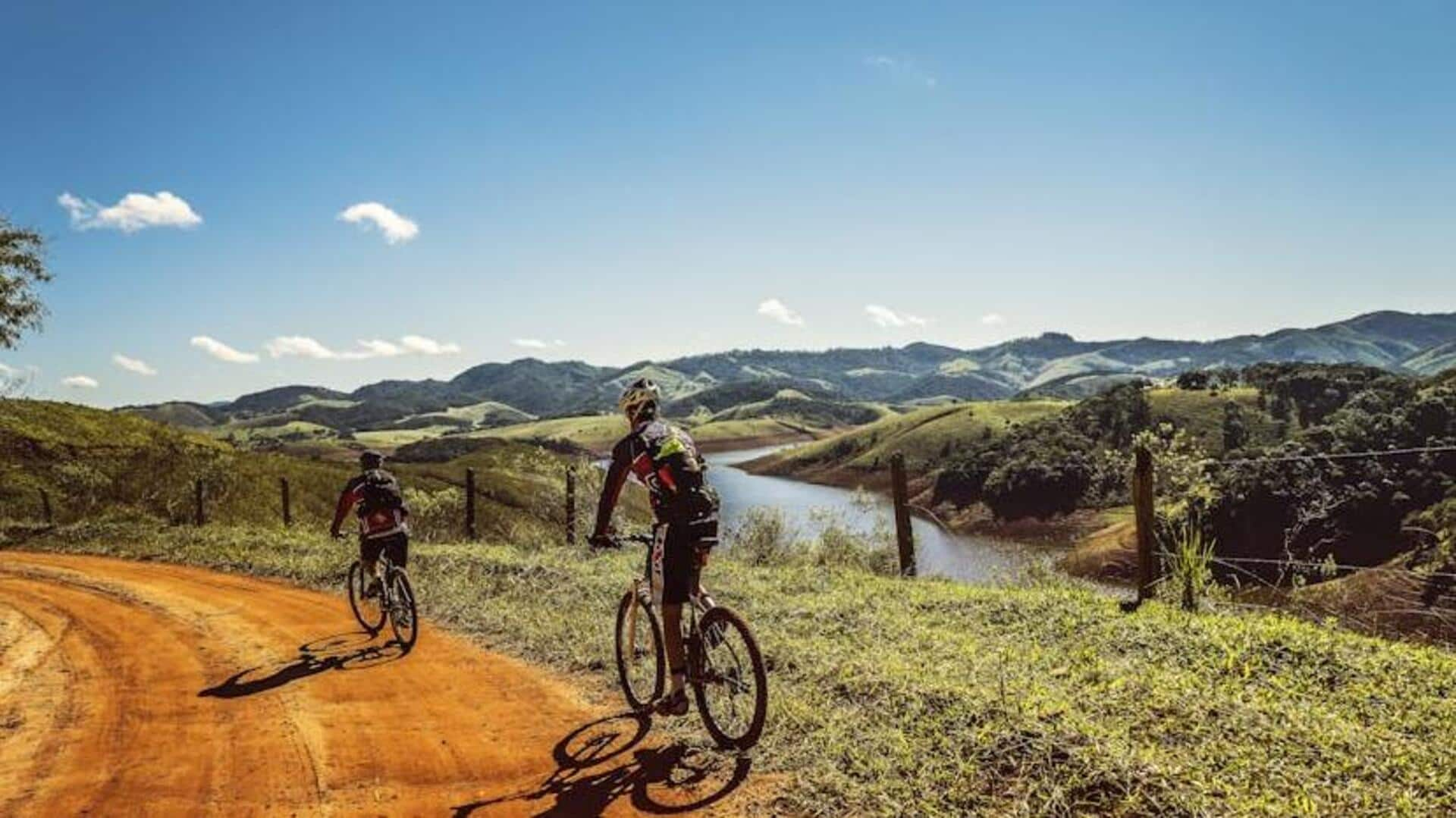
Go for mountain biking across Lesotho's dramatic landscapes
What's the story
For mountain biking aficionados, Lesotho, a tiny landlocked country in Southern Africa, is an absolute delight.
From rugged terrains to captivating landscapes, it is an ideal place to explore the beauty of nature on two wheels.
The mountains are both the challenge and the reward for bikers on the quest for adventure.
With trails of different levels, Lesotho welcomes amateurs and pros alike looking to hone their skills amid spectacular sights.
Sani Pass
Exploring Sani Pass
Sani Pass is among the most popular mountain biking routes in Lesotho. It connects South Africa with Lesotho and is characterized by steep gradients and hairpin bends.
The pass provides a thrilling ride with panoramic views of the Drakensberg Mountains.
Riders must be ready to face rapidly changing weather conditions as they ascend from 1,544 meters to 2,876 meters above sea level.
Best for experienced bikers, due to its challenging nature.
Thaba Bosiu
Trails around Thaba Bosiu
Thaba Bosiu also makes for an ideal place for mountain biking enthusiasts.
The trails around this site are moderately difficult, making them perfect for intermediate riders.
While you cruise through these paths, you will encounter varied landscapes, from rocky terrains to grassy fields.
This area presents an amazing opportunity to mix cultural exploration with an outdoor adventure.
Maloti Mountains
Maloti Mountains adventure
The Maloti Mountains also serve as an ideal mountain biking destination in Lesotho.
The mountains have a number of trails, suited for different skills, which makes them open to riders of all kinds.
The paths here offer breathtaking views of valleys and peaks, all while ensuring strenuous climbs and descents that challenge your endurance and skill.
Safety tips
Tips for safe riding in Lesotho
Safety is paramount while biking through Lesotho's mountains.
Before attempting any trail, make sure your bike is in perfect condition, checking brakes, tires, and gears.
Always wear helmets and gloves. Carry enough water to stay hydrated on longer routes.
Familiarize yourself with local weather patterns as they can change suddenly at high altitudes.
Finally, notify someone of your route before you leave for your ride.